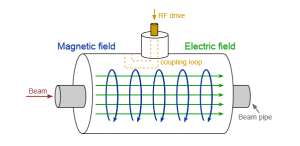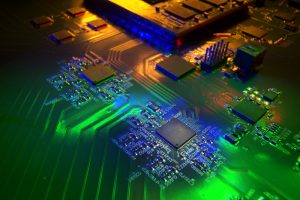Radio frequency (RF) refers to high-frequency electromagnetic fields. An RF power source, commonly used in the communication industry, is a system that provides these fields. These fields resonate in an enclosed device called a cavity, an electromagnetically resonant structure. When used inside particle accelerators, RF cavities generate a strong longitudinal electric field that accelerates particles (beam) to a desired energy level.
The wall plug power efficiency for the Compact SRF Accelerator is dominated by the efficiency of the RF power source. IARC has adopted a solution based on an injection-locked magnetron with integrated driver. Although magnetrons were developed pre-World War II for radar applications, they remain today the most efficient and lowest-cost source for the generation of RF power in the high MHz to few GHz frequency range.
Millions of magnetrons are produced annually for kitchen microwave ovens at 2.45 GHz, where a 1-kW magnetron has a cost less than a penny per watt. Industrial RF heating systems employ 915 MHz magnetrons operating at power levels exceeding 100 kW of continuous-wave RF output and achieve high reliability. The cost of such turnkey industrial heating systems is on the order of $1 per watt of output RF power, compared to Klystrons, inductive output tubes (IOTs), and solid-state RF power sources, which typically have installed costs in the range $5-15 per watt.
Driving an SRF-cavity-based accelerator has more stringent requirements than simply providing heat for industrial processes; the RF source requires more complex controls and better spectral purity of the RF output. Fermilab has a patent-pending technology for phase modulating an injection-locked magnetron, allowing for full vector modulation of the magnetron output.



